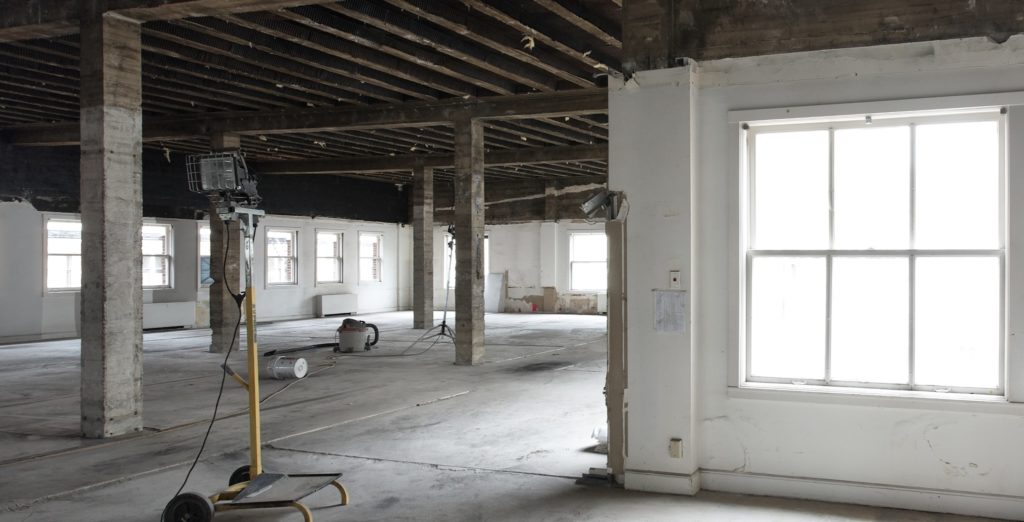What Does ‘Cold Grey Shell’ Mean?
There is no shortage of interesting terminology in Commercial Real Estate that many who are unfamiliar with the industry do not properly understand. One specific area of interest is found in the description of how raw or unoccupied spaces can be delivered to new tenants prior to the space being built out for its specific use. This topic is especially important as the differences of how a space is delivered can affect the cost of a transaction by tens of thousands to over a hundred thousand dollars for the tenant. With this much at stake, understanding the various definitions of how a space is delivered is worth learning.

While there are multiple synonyms for how spaces are delivered, an unoccupied or new space is often described as being a ‘Shell’ space. Next, two of the most commons types of unoccupied spaces or ‘Shells’ come with the terminology of either a ‘Cold Grey Shell’ or a ‘Warm Vanilla Shell’. Let’s take a further look.
What is Shell Space?
Shell Space denotes the interior condition of a specific space that does not have substantial interior improvements or finishes. With a new development or new construction, most spaces are typically delivered in a Shell condition; which means the space is essentially four perimeter walls with a primarily open floor plan. The tenant then builds out the space to their specific parameters which makes it no longer a shell, but a finished or built out space.
Additionally, a landlord or tenant may choose to demolish the interior finishes of an already built out space if the specific finishes are not beneficial or needed by the next tenant. This is considered returning a space to a Shell Condition and is often required prior to performing a new build out on a second-generation space.
Shell construction typically denotes the floor, perimeter walls and roof of an enclosed premises and may include some HVAC, electrical or plumbing improvements, but not internal walls, interior space partitioning, individualized tenant finishes or fixtures.
Essentially, a Shell Space is an open box that is ready for a tenant to build out or install their unique fixtures in. However, the difference of the ‘type of shell’ is where the details can make a significant impact on the cost for a tenant. Let’s take a look at the differences between a Cold Grey Shell and a Warm Vanilla Shell.

What is a Cold Grey Shell?
A Cold Grey Shell is most often defined through understanding the two main descriptor words before the word shell:
- Cold: typically means the space does not have HVAC (heating, ventilation and air conditioning) available or installed in the space; and hence, the space cannot be heated (or cooled) prior to the HVAC being installed. In this instance, an HVAC unit or units will need to be installed or supplied into the space in order to bring heating, ventilation and air conditioning to the space. Hence, the space is cold.
- Grey: typically means the space has no other improvements to it such as the walls being finished with drywall and painted, a drop ceiling grid and tiles or a drywall ceiling, appropriate lighting installed, flooring, or any other standard improvements such as a restroom, built out offices, etc. The word grey speaks to the fact the floor and any exterior walls are often the color grey because of the untreated concrete floor or walls.
A Cold Grey shell is essentially a space with no HVAC or finishes of any real substance. Many times landlords will also leave a portion of the floor or even the entire floor in dirt condition without pouring any concrete, if they assume the future tenant will need to install heavy plumbing.
For additional commercial real estate terminology, visit our glossary page.
For additional information, visit our other blog series or contact an expert agent representing healthcare practices in your area who can further explain these and other terms to you at CARR.US